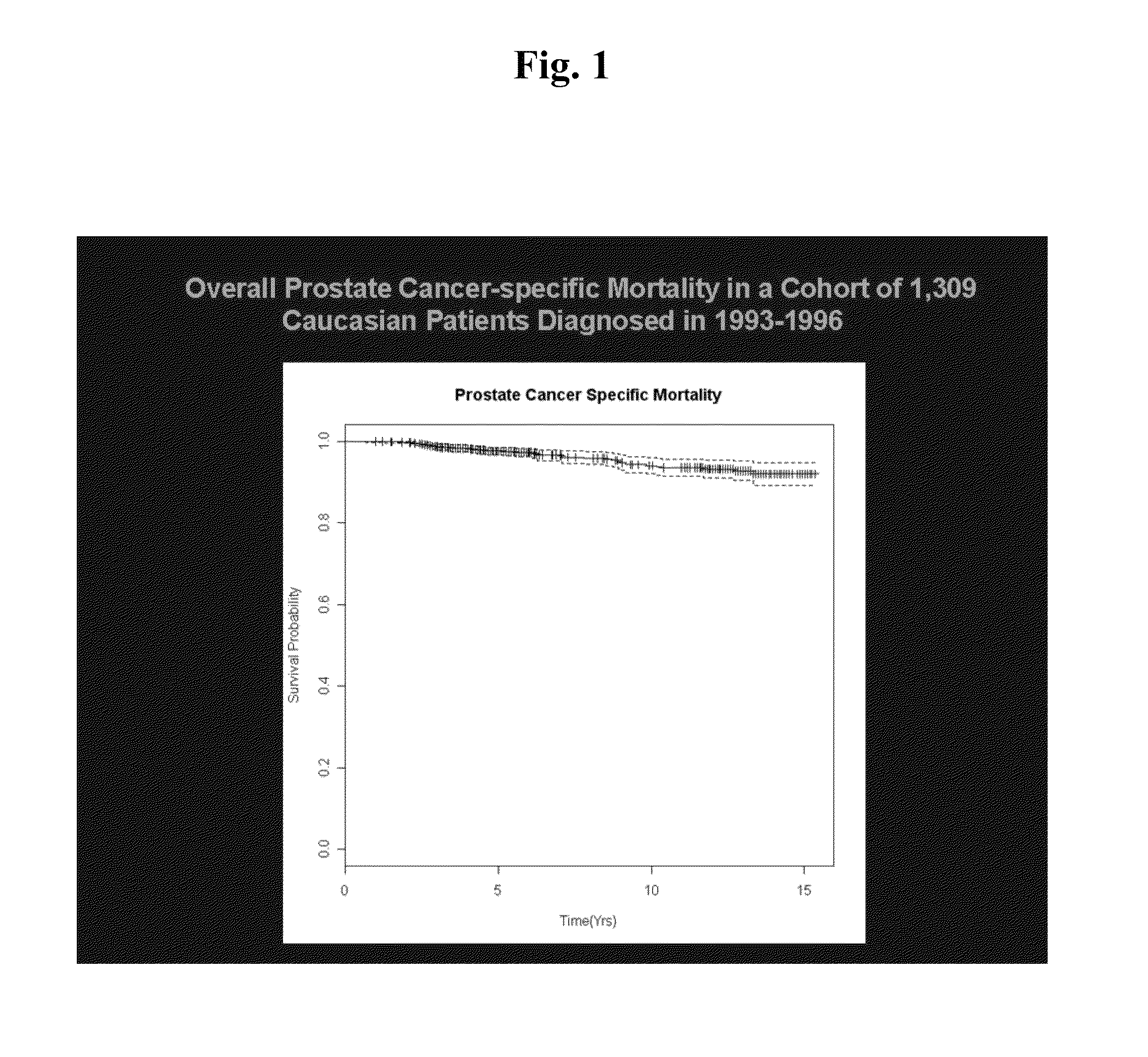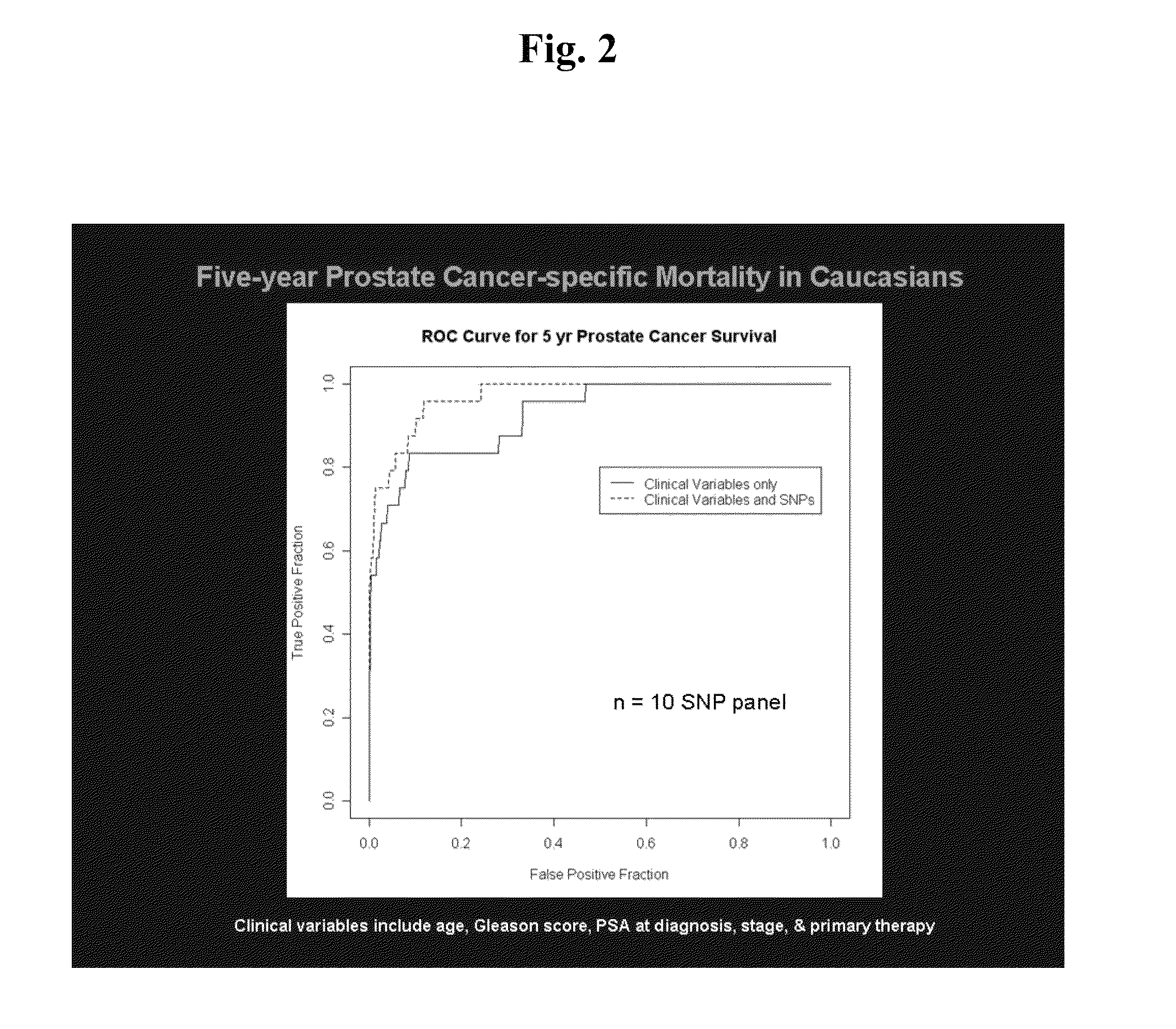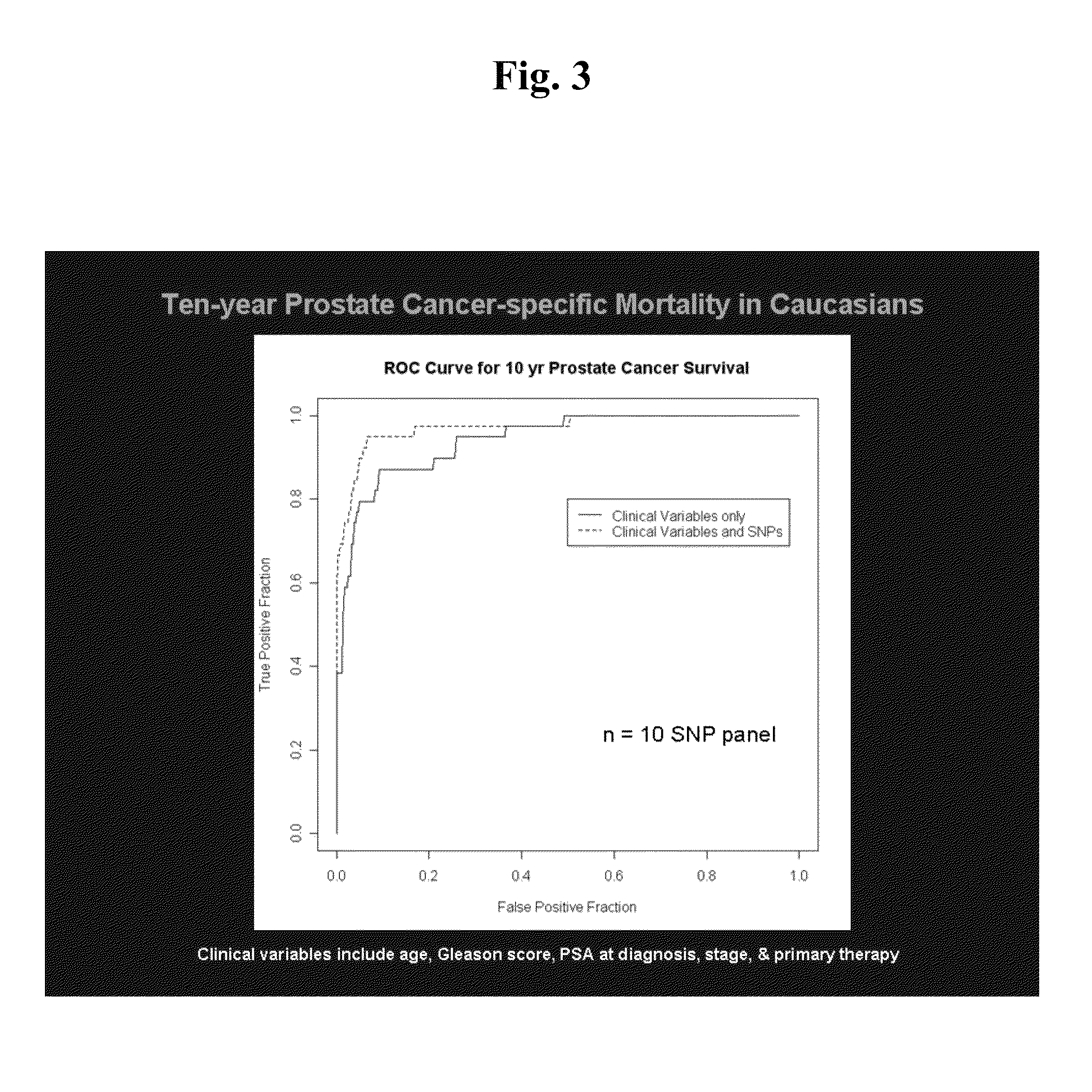SNP panels for predicting prostate cancer-specific mortality
a prostate cancer and mortality technology, applied in the field of genetic epidemiology, cancer biology and oncology, can solve the problems of increasing the risk of lethal prostate cancer, over-treatment of many patients, and under-treatment of patients
- Summary
- Abstract
- Description
- Claims
- Application Information
AI Technical Summary
Benefits of technology
Problems solved by technology
Method used
Image
Examples
example 1
Association between Genetic Polymorphisms and Prostate Cancer Survival
[0076]This example describes the evaluation of the association between genetic polymorphisms and survival in prostate cancer patients.
[0077]A panel of 937 single nucleotide polymorphisms (SNPs) in 156 candidate genes associated with prostate cancer pathways of interest (e.g., androgens, estrogens, antioxidants, inflammation, DNA repair, and circadian rhythm) as well as SNPs identified in genome-wide association studies (GWAS) of prostate cancer were genotyped for 1,457 prostate cancer patients (mean follow-up=11.4 years; range 3-17 years; 90% Caucasian). For the present study, 1,309 Caucasian patients with available DNA were included.
[0078]Genomic DNA was extracted from peripheral blood using standard methods. Purified DNA was used to genotype SNPs on the Applied Biosystems (ABI; Foster City, Calif.) SNPlex system. SNP alleles were called by ABI's GeneMapper software. Each of these SNPs was evaluated for Hardy-Wei...
example 2
Study Subjects
[0086]Seattle Patient Cohort
[0087]The Seattle cohort was established from two prior population-based case-control studies of prostate cancer in residents of King County, Wash. Stanford et al., Cancer Epidemiol. Biomarkers Prev. 8(10):881-6 (1999); Agalliu et al., Am. J. Epidemiol. 168(3):250-60 (2008). In the first study, cases were diagnosed between Jan. 1, 1993, and Dec. 31, 1996 and were 40-64 years of age at diagnosis. In the second study, cases were diagnosed between Jan. 1, 2002, and Dec. 31, 2005 and were 35-74 years of age at diagnosis. Overall, 2,244 eligible prostate cancer patients were identified and 1,754 (78.2%) were interviewed. Blood samples yielding sufficient DNA for genotyping were drawn from 1,457 (83.1%) interviewed patients.
[0088]For the current study, 1,309 Caucasian patients with DNA available were included. These incident cases had histologically confirmed adenocarcinoma of the prostate and were ascertained from the Seattle-Puget Sound SEER can...
example 3
[0092]Nine-hundred and thirty-seven SNPs primarily from candidate genes in biological pathways of interest for prostate cancer were genotyped in the Seattle cohort, using the SNPIex Genotyping System (Applied Biosystems, Inc., Foster City, Calif.). The GeneMapper software package (Applied Biosystems) was used to assign genotypes for each SNP. Replicate samples (n=140) were interspersed throughout all genotyping batches. Genotyping scores, including quality control data, were re-checked by different laboratory personnel and the accuracy of each assay was confirmed. Ninety SNPs were removed due to genotyping failure (N=57), monomorphism (N=27), or a minor allele frequency count of less than 10 (N=6). The remaining 847 SNPs were used for permutation testing to identify those associated with PCSM, after controlling for false-positive results.
[0093]Twenty-two SNPs were found to be significantly associated with PCSM in the Seattle cohort. For these SNPs, call rates were >95% and...
PUM
| Property | Measurement | Unit |
|---|---|---|
| temperature | aaaaa | aaaaa |
| pH | aaaaa | aaaaa |
| median time | aaaaa | aaaaa |
Abstract
Description
Claims
Application Information
 Login to View More
Login to View More - R&D
- Intellectual Property
- Life Sciences
- Materials
- Tech Scout
- Unparalleled Data Quality
- Higher Quality Content
- 60% Fewer Hallucinations
Browse by: Latest US Patents, China's latest patents, Technical Efficacy Thesaurus, Application Domain, Technology Topic, Popular Technical Reports.
© 2025 PatSnap. All rights reserved.Legal|Privacy policy|Modern Slavery Act Transparency Statement|Sitemap|About US| Contact US: help@patsnap.com



